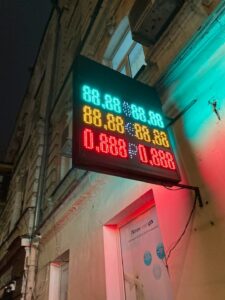Understanding the Factors Affecting EUR/USD Forex Trading
Forex trading involves the buying and selling of currencies with the aim of making a profit. One of the most popular currency pairs in the forex market is the EUR/USD. The EUR/USD pair represents the exchange rate between the Euro and the US Dollar. This currency pair is highly traded due to the economic significance of both the Eurozone and the United States. In order to be successful in trading EUR/USD, it is important to understand the factors that influence its movements.
1. Interest Rates
Interest rates play a crucial role in forex trading, and the EUR/USD pair is no exception. Central banks, such as the European Central Bank (ECB) and the Federal Reserve (Fed), have the power to influence interest rates. When the ECB increases interest rates, it attracts foreign investors looking for higher returns. This increases the demand for the Euro and strengthens the currency against the US Dollar. Conversely, when the Fed raises interest rates, it attracts investors to the US Dollar, causing the Euro to weaken.
2. Economic Data
Economic data releases, such as GDP growth, inflation, and employment figures, have a significant impact on the EUR/USD pair. Strong economic data from the Eurozone can lead to an increase in the value of the Euro, as it indicates a healthy economy. On the other hand, positive economic data from the United States can strengthen the US Dollar. Traders closely monitor economic indicators and adjust their trading strategies accordingly.
3. Political Factors
Political events and developments can have a substantial impact on the EUR/USD pair. Elections, changes in government, and geopolitical tensions can create uncertainty in the market, leading to volatility in currency prices. For example, during the Brexit referendum in 2016, the Euro experienced significant fluctuations as traders reacted to the news. It is important for traders to stay informed about political events and their potential impact on the currency pair.
4. Market Sentiment
Market sentiment refers to the overall feeling or attitude of traders towards a particular currency pair. It is influenced by various factors, including economic indicators, political events, and market news. Positive market sentiment towards the Euro can lead to increased buying pressure, causing the currency to rise against the US Dollar. Conversely, negative market sentiment can result in selling pressure, leading to a decline in the Euro’s value. Traders often use technical analysis and sentiment indicators to gauge market sentiment and make informed trading decisions.
5. Central Bank Policies
The monetary policies implemented by central banks greatly influence the EUR/USD pair. The ECB and the Fed use tools such as quantitative easing, interest rate changes, and forward guidance to manage their respective economies. When the ECB engages in expansionary monetary policy, such as lowering interest rates or implementing bond-buying programs, it can weaken the Euro. Similarly, when the Fed tightens monetary policy, it can strengthen the US Dollar. Traders closely monitor central bank announcements and statements to anticipate potential changes in currency valuations.
In conclusion, understanding the factors that affect the EUR/USD forex trading is essential for success in the market. Interest rates, economic data, political factors, market sentiment, and central bank policies all play significant roles in shaping the movements of this currency pair. Traders need to stay informed, analyze market trends, and develop effective trading strategies to navigate the complexities of the forex market. By keeping a close eye on these factors, traders can make informed decisions and increase their chances of profitability in trading the EUR/USD pair.






